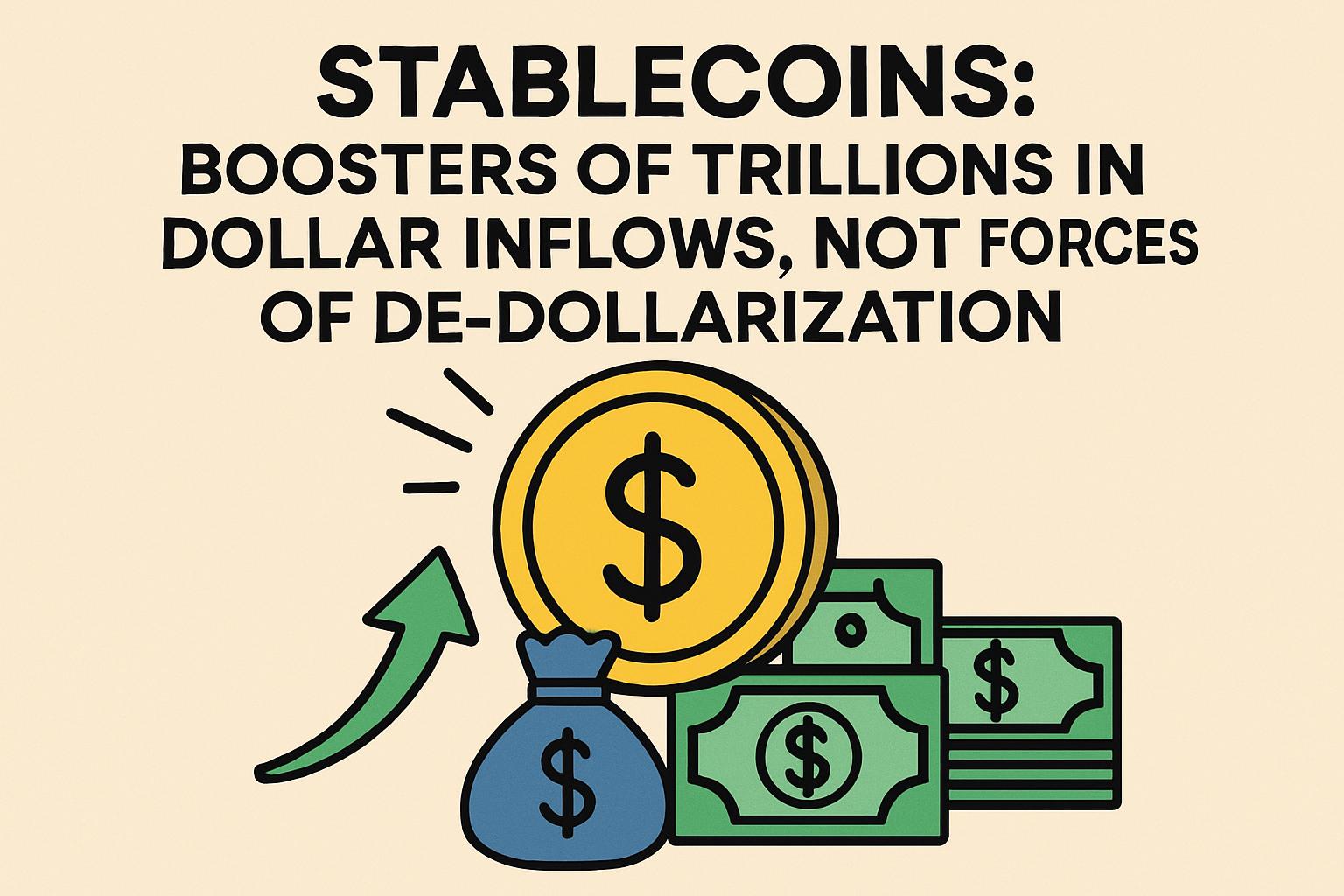In a rapidly evolving financial landscape, JPMorgan’s recent report sheds light on a transformative trend: the rise of stablecoins is not driving ‘de-dollarization’ but rather, strengthening the dollar’s role in the global financial system. As nations worldwide adapt to digital currency, stablecoins are emerging as a compelling force that might soon drive trillions of dollars in capital inflows.
The Role of Stablecoins in Boosting Dollar Demand
According to JPMorgan analysts Kunj Padh, Meera Chandan, and Octavia Popescu, global adoption of stablecoins is set to become a significant driver of increased dollar demand. They argue that rather than diminishing the dollar’s influence, the growth of stablecoins could cement its status further.
“Stablecoins are not catalyzing de-dollarization; instead, their expansion is more likely to solidify the dollar’s role in the global economic framework.”
Market Predictions: Divergent Outlooks on Stablecoin Growth
JPMorgan’s internal forecasts on the stablecoin market’s potential growth reveal a broad spectrum of expectations:
-
Emerging Markets Equity Strategy Team: Forecasts the stablecoin market could reach $2 trillion.
-
U.S. Rates Strategy Team: Projects a more conservative ceiling of about $500 billion.
If the most optimistic estimates hold, JPMorgan’s FX strategists believe that by 2027, demand for the dollar driven by stablecoins could surge by approximately $1.4 trillion. Although this figure is staggering, it remains small compared to the $8.6 trillion daily transaction volume recorded by the Bank for International Settlements.
The Influence of Funding Sources and Market Sentiment on Dollar Demand
Whether the burgeoning stablecoin market will genuinely increase dollar demand hinges on the origins of these funds. If the transition to stablecoins involves reallocating U.S. domestic funds, such as bank deposits or money market funds, the overall demand for dollars might remain unchanged.
However, if corporations or households abroad buy U.S. assets to issue or hold stablecoins, this would indeed constitute new dollar inflows. Despite stablecoins’ growth, JPMorgan notes no significant impact on global currency flows has been observed yet.
USD and BTC: Dual Engines of Stablecoin Market Growth
JPMorgan highlights that should the dollar and Bitcoin continue to show strength, further expansion of the stablecoin market is anticipated. The interdependence of stablecoins on the dollar is more profound than on global foreign exchange reserves or international trade settlement systems.
Ultimately, if the positive correlation between the dollar and Bitcoin endures, it would provide optimal conditions for swift stablecoin market expansion.

![[News] Bitcoin at a Turning Point? 10x Research Signals a Bullish Macro Shift Ahead](https://cryptoexplores.com/wp-content/uploads/2025/06/new20250616.jpg)
![[News] Binance Lists $HOME, the Gas-Free, Bridge-Free All-in-One DeFi App](https://cryptoexplores.com/wp-content/uploads/2025/06/news20250617.jpg)